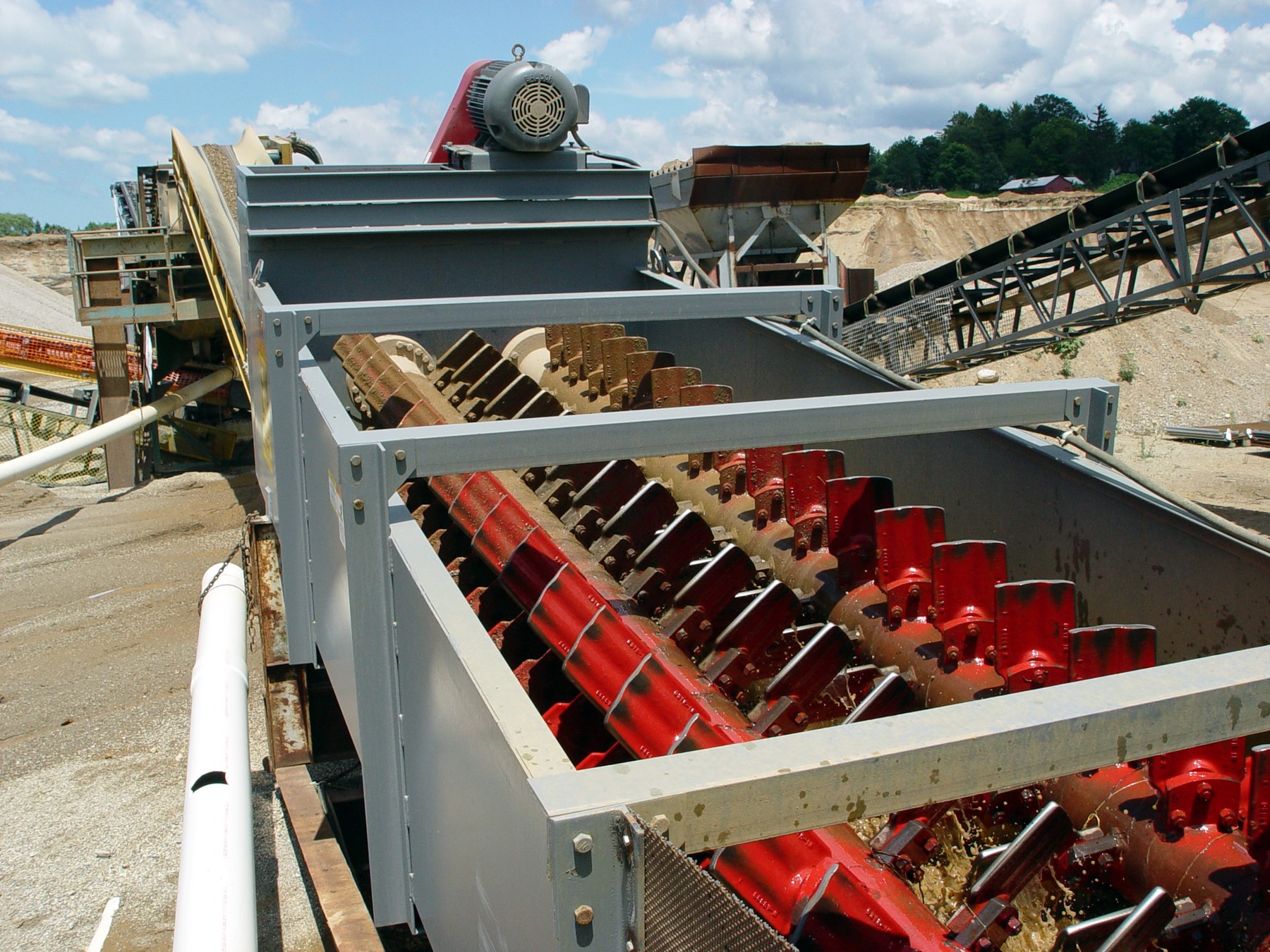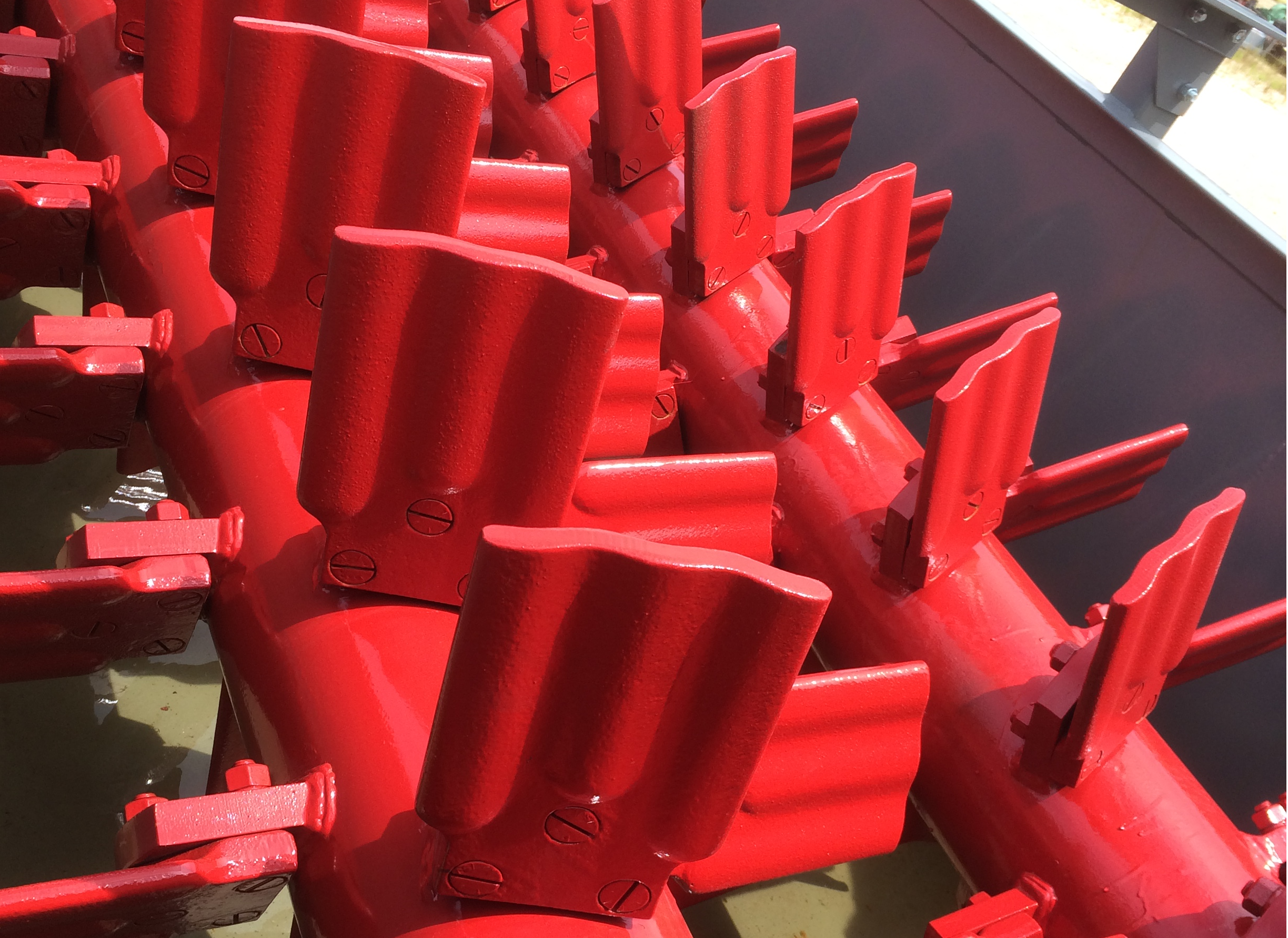
Keeping Your Sol-Clay Washer running like new
Sol-Clay Washers are ideal for scrubbing water soluble clay from aggregate material. With intermeshing corrugated paddles that run the length of each shaft, Sol-Clay Washers fall between Coarse Material Washers and Log Washers in terms of scrubbing capabilities. If you need to remove tough soluble clays from your deposit, Sol-Clay Washers will abrade and grind the material to release the clays and flush them through the discharge gates.
Because clay removal is an important step in the washing process, you want to be sure your Sol-Clay Washer is running like new every time you turn it on. To do this, it is imperative you follow a regularly scheduled maintenance plan. Performing routine maintenance can help you discover any potential issues before they become a larger problem that results in costly downtime.

Sol-Clay Washers remove tough soluble clays from aggregate feeds by scrubbing the material.
Establishing your maintenance routine
When establishing your maintenance routine, consider performing daily or per-shift, weekly, monthly, quarterly, semi-annual and yearly inspections and determine which components will need monitored the most frequently.
A routine maintenance schedule for a Sol-Clay Washer might look like this:
Daily inspections, or once per shift
- Lubricate all applicable components and ensure that all components are receiving adequate lubrication.
- Inspect the inside and bottom of the tub and remove any extraneous material that might interfere with washer startup and rotation.
- Inspect reducers for excessive heat. If you come across a hot reducer, refer to the Reducer section of the operator’s manual for information on how to proceed.
- Inspect all the bearings for excessive heat; bearings should not be hot to the touch. If you come across a hot bearing, refer to the Bearing section of the operator’s manual.
- Inspect the motors for excessive heat. If you comes across a hot motor, refer to the Motor section of the operator’s manual.
- Inspect all electrical cables and connections for damage.
- Inspect all water lines and connections for damage or possible leaks.
- Ensure the side drain board water is on and functioning. It is important that water volume remain sufficient to keep the drain board channel open when running maximum tonnage.
- Inspect all belts for proper tension and alignment.
- Make sure all guards are in place and secure.
Weekly inspections, or every 40 hours
- Inspect all motor bolts for tightness.
- Inspect the area around the motor cooling fins for cleanliness.
- Inspect all belts for proper tension and alignment.
- Inspect for loose bolts anywhere on the machine, supports, drive, mounting spuds, paddles, shaft drive coupling, stub shaft, etc.
- Check the oil level in the gear reducer and check all seals for signs of leakage.
- Check the outboard bearing vent opening relief slot for evidence of water leakage caused primarily by a leaky shaft seal. This slot must be kept open by removing any excess grease that could bridge over and plug the slot. Nine out of 10 failed bearings have this relief slot plugged with grease.
Monthly inspections, or every 250 hours
- Check the reducer oil level. Inspect the breather for cleanliness.
- Make sure to inspect all mounting spuds and paddles for wear and proper operating condition. Replace any components that reduce operating efficiencies.
- Check the weir overflow for a possible out-of-level condition, which could be caused by a settling of the machine.
- If your Sol-Clay Washer is equipped with a Hydrotex Bearing, clean out and remove any accumulated silt or grit. Inspect the Hydrotex Bearing and steel wear sleeve for signs of wear. If the bearing has ¼” or more of wear, it should be rotated 180 degrees. After one half rotation, the bearing must be replaced. If the steel wear sleeve has 1/8” or more of wear, it must be replaced.
Quarterly inspections, or every 500 hours
- Lubricate the outboard bearing. If the shaft seal is leaking water, which would be identified by water running from the relief slot into the bearing housing.
Semi-annual inspections, or every 1,000 hours
- Check or sample the oil in the drive reducer.
Yearly inspections, or every 2,000 hours
- Change the oil in the drive reducer. The Lubrication section of the operator’s manual lists the type of oil, viscosity and capacity for each component that requires lubrication. Be sure to maintain the level of oil required for operation throughout the year, but at the end of each year or 2,000 hours, drain the oil completely and replace it.
- Inspect the condition and wear of the tub and sides and address any worn areas as needed.
Download a Sol-Clay Washer Maintenance Checklist

Sol-Clay Washers feature twin shafts with intermeshing, corrugated paddles that help facilitate the scrubbing process.
Paddle wear
Sol-Clay Washers feature twin rotating shafts with intermeshing corrugated paddles. These paddles are square shaped to cut and abrade the material, facilitating the clay removal process. Over time, as the paddles make contact with the material, the square leading edges will wear down.
To prolong the life of your paddles, you can swap the paddles on the left shaft with the paddles on the right shaft so that the other side of the paddle can be utilized.
Once the leading edge of the swapped paddle wears down, to the point where the whole paddle resembles a boat or airplane propeller, you’ll need to replace the paddles.


